The Updated iPhone 14 Gets Longer Battery Life and Mind-Blowing Cameras
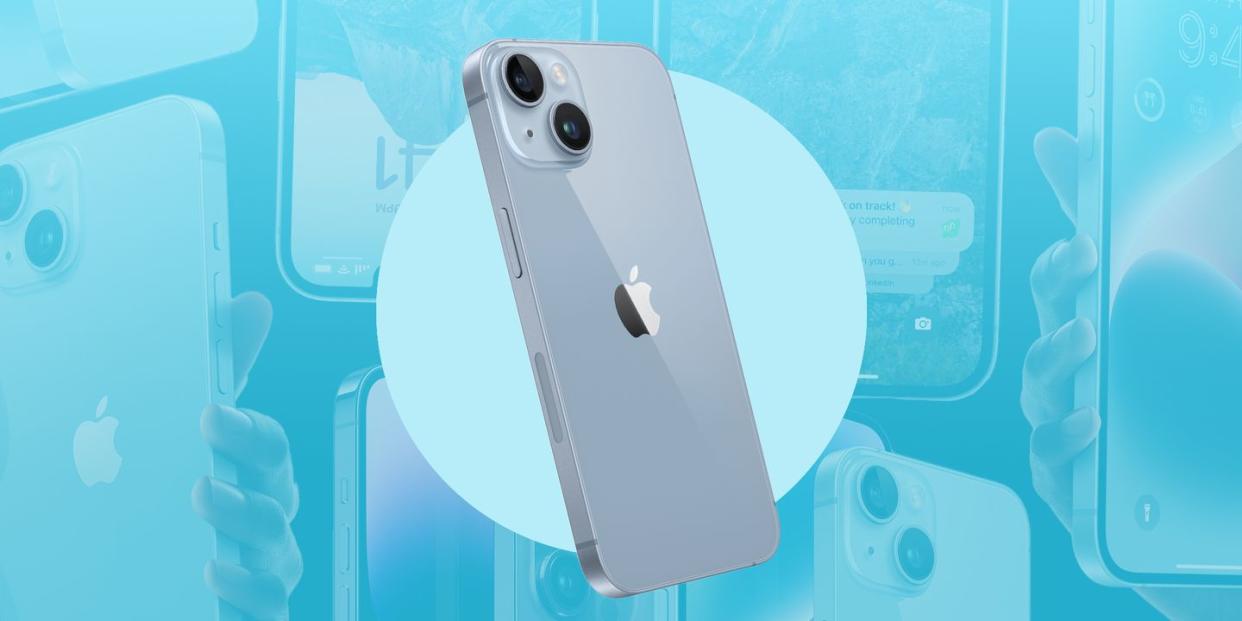
"Hearst Magazines and Yahoo may earn commission or revenue on some items through the links below."
From groceries to gas, everything seems like it’s more expensive than in years past. Phones are definitely not an exception to the rule, and have also fallen victim to inflation and supply chain constraints.
For example, in 2016, Apple charged $649 for a brand-new iPhone 7. This year’s iPhone 14 starts at $799. I don’t know about you, but I’m paying more attention to prices than I have in the past and hold on to my smartphones for longer. Fortunately for consumers, the iPhone 14 starts at the same price as last year’s model.
With Apple’s newest wave of smartphones arriving in stores on Sept. 16, you’re probably asking yourself two questions: “Should I upgrade my phone?” and “Is the iPhone 14 worth it?” I spent almost a week testing the iPhone 14 to help you answer these questions, because, reader, I too am somebody who uses a phone that was released in 2020 and was torn on whether I should upgrade or not.
Design
At first glance, the $799 iPhone 14 looks nearly identical to the iPhone 13. The only physical differences I noticed were a slightly bigger camera bump on the back and the lack of a SIM card tray. With its strengthened front and rear glass panels (which are the toughest in the business) and its aerospace-grade aluminum edges, the iPhone 14 is sleek and durable in equal measure.
The smartphone rocks a fully waterproof build with an IP68 rating, which means the phone can survive immersion in 6 meters (20 feet) of water for 30 minutes. It’ll survive spillage from your morning coffee, too.
I prefer the iPhone 14’s flat edges to the curved edges from previous iPhone iterations. It’s easy to grip and has a bit of heft to it, so it looks and feels expensive. However, it’s not as easy to text one-handed as it is with the iPhone 13 mini. And despite the lack of a physical SIM tray, I was able to get my review unit connected to my cell phone provider in just a couple of minutes.
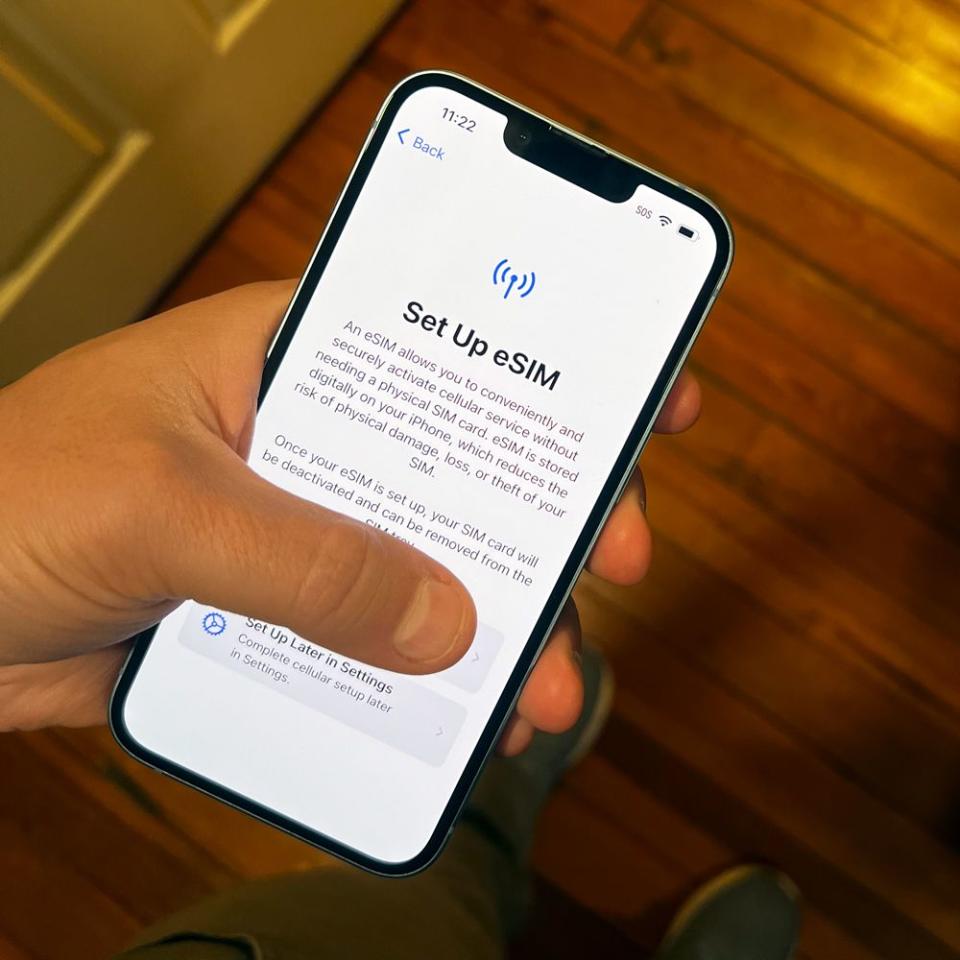
The iPhone 14 is available in a quartet of striking colors: Blue, Purple, Midnight, Starlight, and (PRODUCT)RED. I tested the blue colorway, which reminded me of my favorite iPhone 13 Pro color, the perfectly neutral Sierra Blue.
Display
If your iPhone is older than the iPhone 13, you’ll be quite surprised at how vivid the iPhone 14’s 6.1-inch screen is. Technically, it’s equipped with the same 1,170x2,532-pixel resolution Super Retina XDR display as the iPhone 13. The screen is 30% brighter than the iPhone 12 and provides excellent contrast ratios and HDR support.
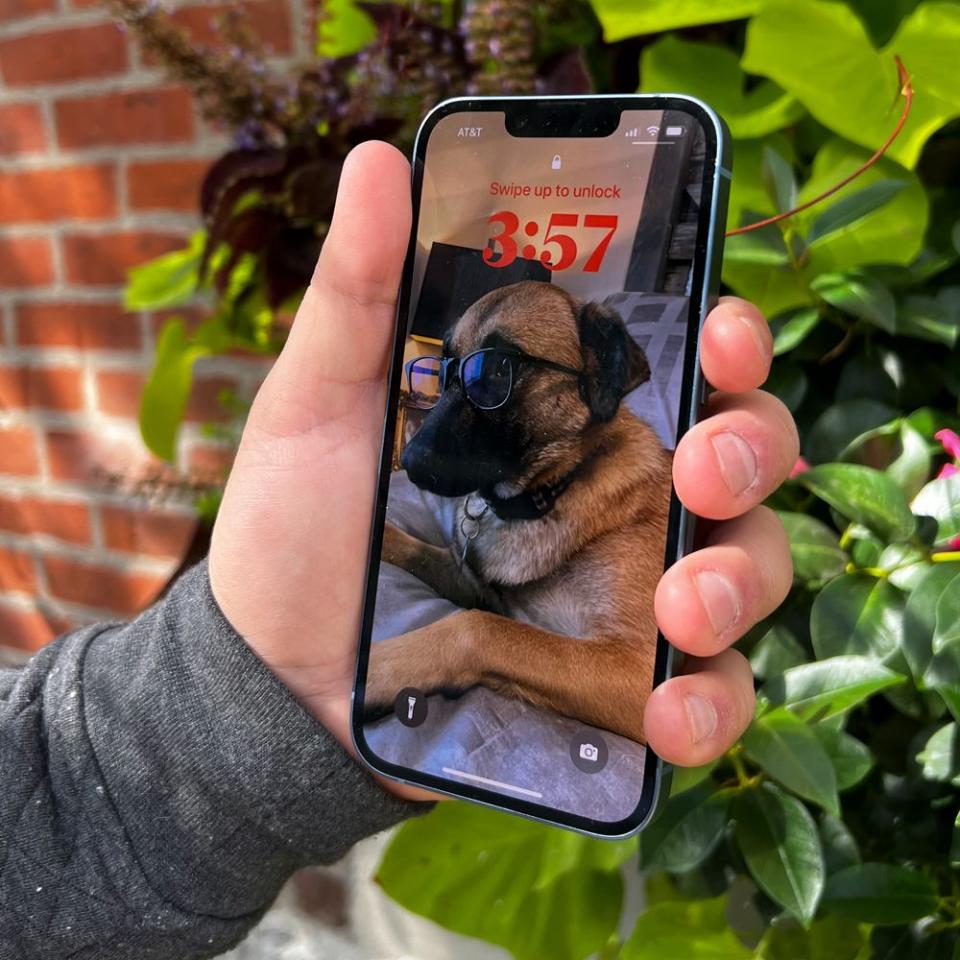
A brighter display means you can more easily use your iPhone in direct sunlight. I took the iPhone 14 to a farmers market on a sunny day and was pleasantly surprised at how clear and bright the screen was.
If you’re a smartphone enthusiast, you may be disappointed to learn that the iPhone 14 omits the 120Hz ProMotion refresh rate — a feature found in the iPhone 13 Pro and 14 Pro, as well as a number of Android smartphones, like the competing Galaxy S22 from Samsung. A higher refresh rate helps improve clarity, especially when it comes to scrolling large bodies of text and while gaming. Personally, I don’t feel as though the screen is inferior whatsoever; the user interface was buttery-smooth.
It’s also worth a mention that Apple now offers iPhone 14 in an even larger size. The $899 iPhone 14 Plus features a 10% bigger display that measures 6.7 inches. If you want to view more content on your display, increase your phone’s text size, or prefer a more immersive display for gaming and video consumption, I highly recommend opting for the 14 Plus over the iPhone 14. Just know that it’s harder to use one-handed.
Cameras
Arguably, the biggest upgrade for the iPhone 14 series is its camera system. Besides having a brighter flash on the backside, you’ll find a new 12MP selfie camera on board that supports autofocus, so your selfies will be sharper and better in quality. The new autofocus tech makes it easier to capture group shots, too.
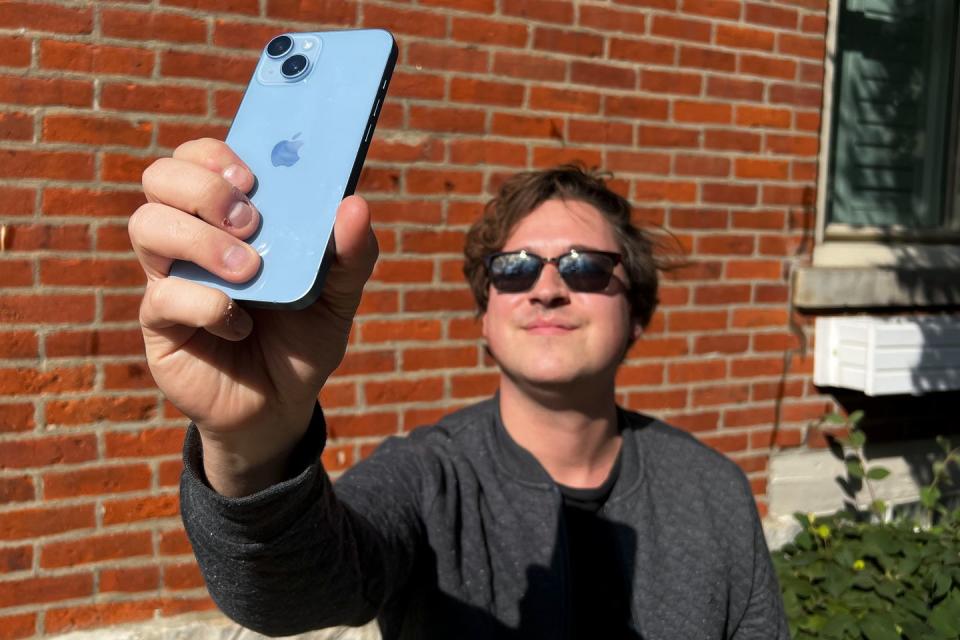
Not only that, but the iPhone 14 also packs a brand new 12MP main camera with a larger sensor, a faster f/1.5 aperture, and improved image processing — what Apple dubs the “Photonic Engine.” The tech uses machine learning and software alongside your phone’s cameras to improve the quality of low-light photos.
As for the ultra-wide lens, Apple says it’s two times better than the iPhone 13’s camera at capturing photos in low light. I was blown away by the detail the lens provided for up-close images. I primarily use my iPhone for taking pictures of my dogs (don’t we all?) and Luca, my husky, looks especially majestic.
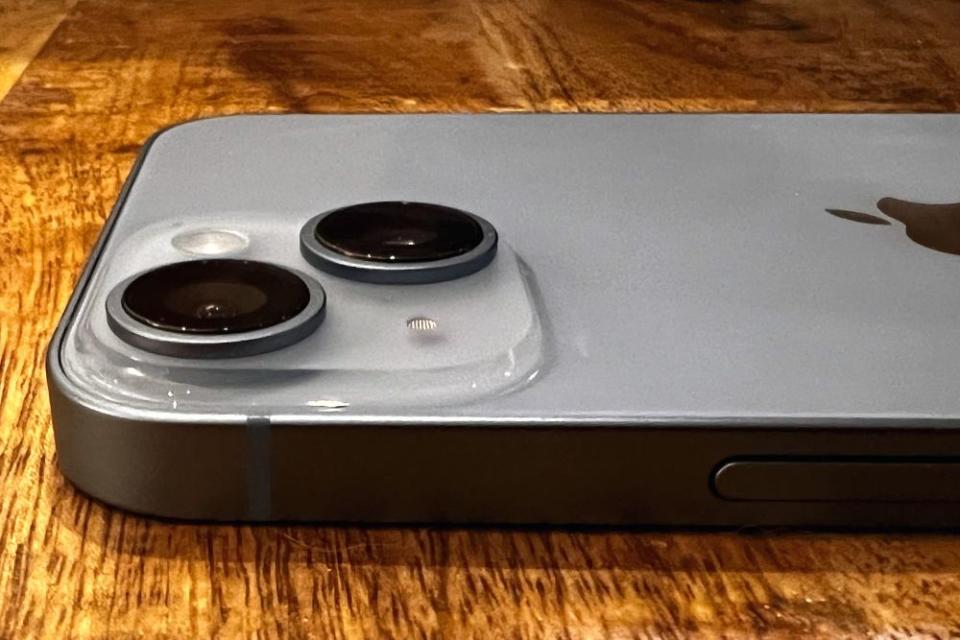
I’m confident most users will be quite impressed with the iPhone’s cameras. Coming from an iPhone 12 mini, I know I was. Night Mode photos were less blurry and could be captured faster, videos are more stable, and everything just looked crisp and incredibly detailed.
For video, Apple brought a new “Action Mode” to the iPhone that essentially replicates a gimbal for steady and smooth video. It’s perfect for those videos where you’re running around chasing the kids. Besides that, zoom has been improved, as was the quality of videos recorded in “Cinematic Mode.” The latter records 4K resolution up to 30 frames per second and 4K at 24 frames per second.
Performance
The iPhone 14 is equipped with Apple’s A15 Bionic chip, the same chipset that was found in last year’s iPhone 13. Not to nerd out on you, but the chip has a 5-core CPU, 4-core GPU, and 16-core Neural Engine. The Neural Engine is what powers machine learning and it's capable of 15.8 trillion (yes, with a “T”) operations per second.
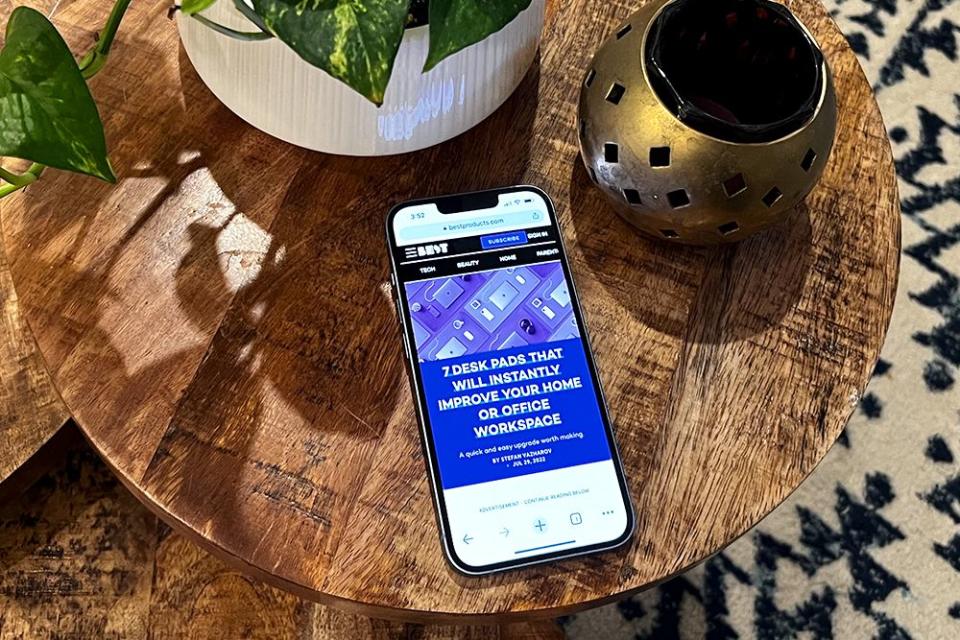
Although the iPhone 14 doesn’t have Apple’s latest chip (you’ll find that on the more expensive iPhone 14 Pro), I promise you won’t experience any hiccups with the iPhone 14. I had no issues whatsoever juggling over a dozen apps, taking Zoom calls, and editing a few 4K video clips. The processor is a beast and I’m confident the iPhone 14 will support software updates for years to come. If you’re a gamer, you’ll be glad to know that the 5-core GPU delivers 18% faster performance than the iPhone 13 as well.
As for battery life, you can expect to achieve a full day of use before needing to plop it onto a wireless charger. During my time testing the iPhone 14, I typically had 20% juice remaining around 9 p.m. If you are a power user, I recommend you opt for the iPhone 14 Plus, which promises the best battery life for an iPhone yet: Apple claims that the model can play up to 26 hours of video before needing charging.
New Features
Besides promising increased durability, better battery life, and improved cameras, the iPhone 14 boasts a slew of new safety features, which may be the defining reason you need to upgrade. Although I wasn’t able to test these features firsthand, I’m still glad they exist.
The first is “Crash Detection,” which is exactly what it sounds like. The iPhone 14 uses its built-in accelerometer and gyroscope sensors to detect high g-forces that are typically experienced in automobile accidents. When a crash is detected, the smartphone can automatically dial emergency services and provide your location.
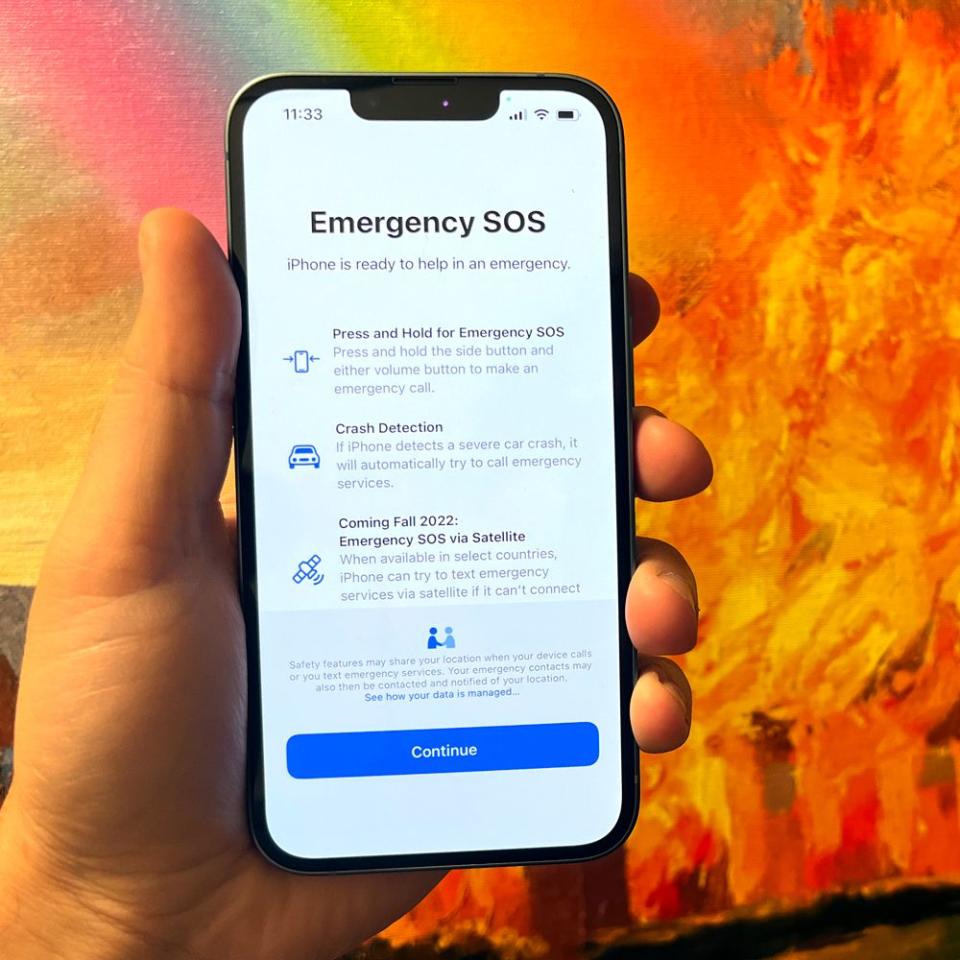
In November 2022, Apple also plans to roll out a satellite-based Emergency SOS feature, so you can send messages via communication satellites when you don’t have a cell signal or Wi-Fi. You can also update your location in the Find My app using the satellite connection, so your loved ones will know where you are when you’re off the grid.
The iPhone’s operating system, iOS 16, provides a more customizable Lock Screen, an improved Focus Mode (so you won’t get disturbed by distracting notifications), and my favorite feature, the ability to edit iMessage messages — so my coworkers won’t shame me when I type “your” when I meant to type “you’re.”
Wrap-Up
Although the iPhone 14 isn’t drastically different than the iPhone 13, it’s still a compelling smartphone that delivers outstanding performance, packs better-than-average cameras, and offers users a smooth and seamless software experience. Its new safety features separate it from the competition as well. I think if you’re currently using an iPhone 8, iPhone X, or iPhone XR, you’ll be glad you upgraded.
For those looking for a more powerful camera system for capturing images and recording ultra high-resolution video, I recommend opting for the $999 iPhone 14 Pro, which has an additional lens, a whopping 48MP main camera, and a 1TB storage option. Most users will be better off saving the cash and opting for the iPhone 14 or 14 Plus, which still both deliver stellar performance and impressive image quality all while stretching your dollar further.
The 14 Plus, which costs $100 more than the iPhone 14, is a good choice for folks who want a bigger display and bump in battery life, but it’s a little harder to hold one-handed. Just know that the iPhone 14 Plus won’t be available until October 7 — a whole three weeks after the iPhone 14 comes out.
You Might Also Like

